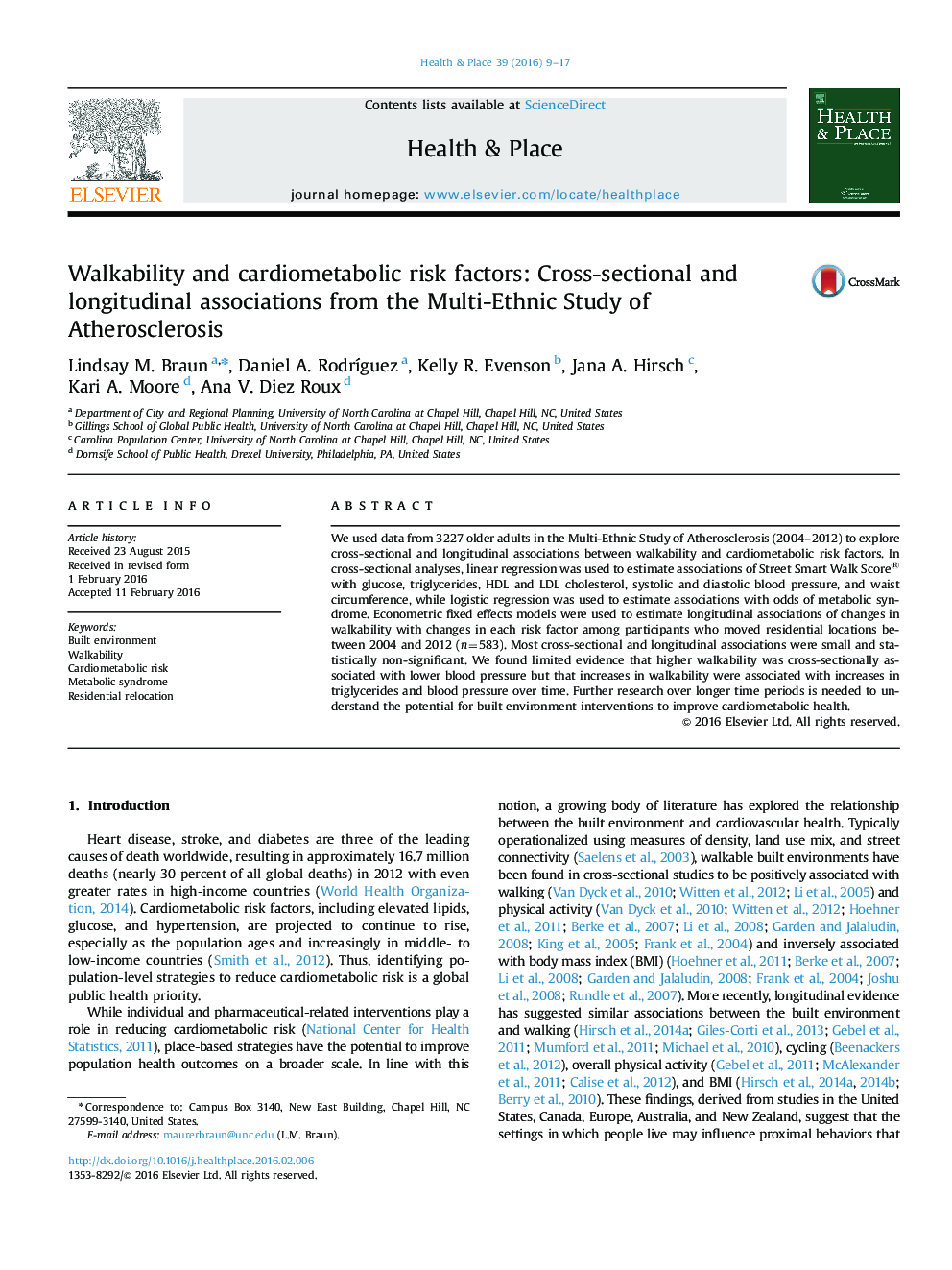| Article ID | Journal | Published Year | Pages | File Type |
|---|---|---|---|---|
| 7457362 | Health & Place | 2016 | 9 Pages |
Abstract
We used data from 3227 older adults in the Multi-Ethnic Study of Atherosclerosis (2004-2012) to explore cross-sectional and longitudinal associations between walkability and cardiometabolic risk factors. In cross-sectional analyses, linear regression was used to estimate associations of Street Smart Walk Score® with glucose, triglycerides, HDL and LDL cholesterol, systolic and diastolic blood pressure, and waist circumference, while logistic regression was used to estimate associations with odds of metabolic syndrome. Econometric fixed effects models were used to estimate longitudinal associations of changes in walkability with changes in each risk factor among participants who moved residential locations between 2004 and 2012 (n=583). Most cross-sectional and longitudinal associations were small and statistically non-significant. We found limited evidence that higher walkability was cross-sectionally associated with lower blood pressure but that increases in walkability were associated with increases in triglycerides and blood pressure over time. Further research over longer time periods is needed to understand the potential for built environment interventions to improve cardiometabolic health.
Related Topics
Health Sciences
Medicine and Dentistry
Public Health and Health Policy
Authors
Lindsay M. Braun, Daniel A. RodrÃguez, Kelly R. Evenson, Jana A. Hirsch, Kari A. Moore, Ana V. Diez Roux,
